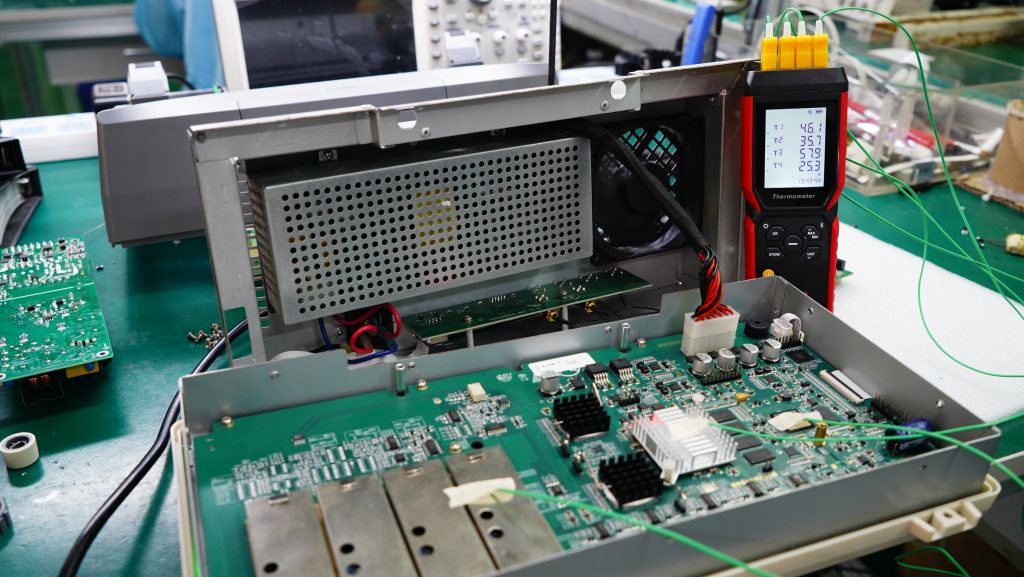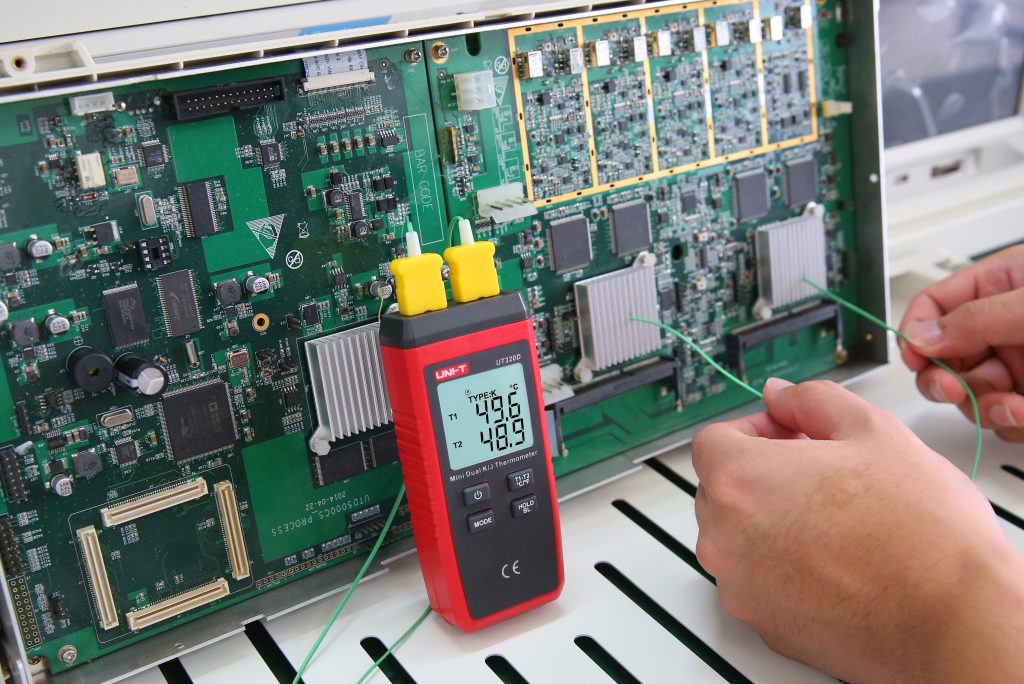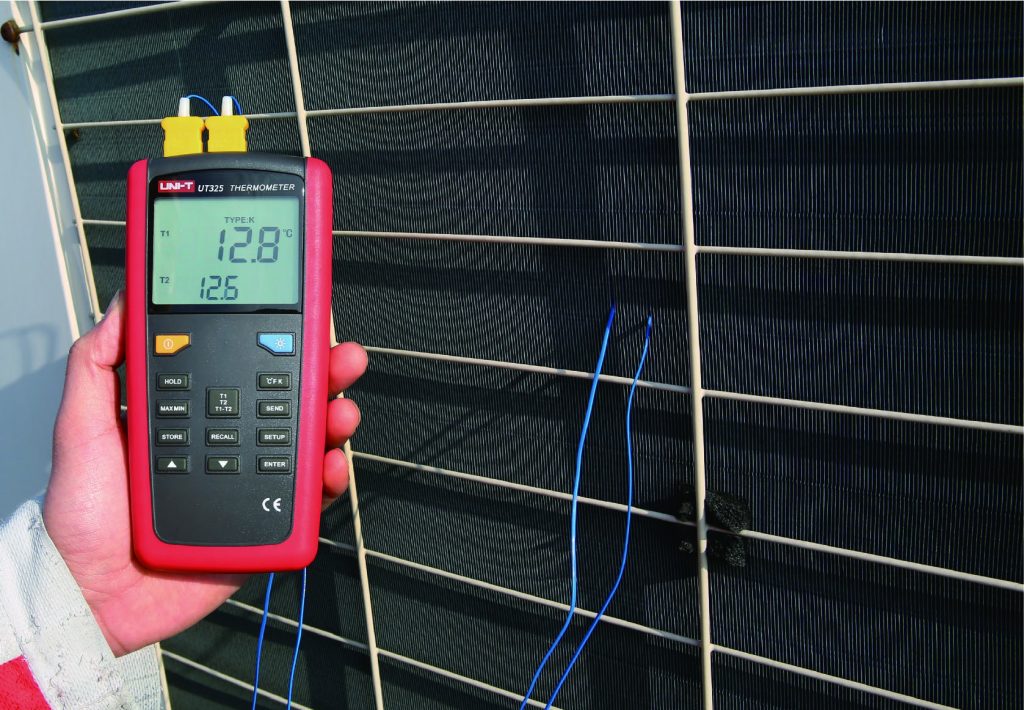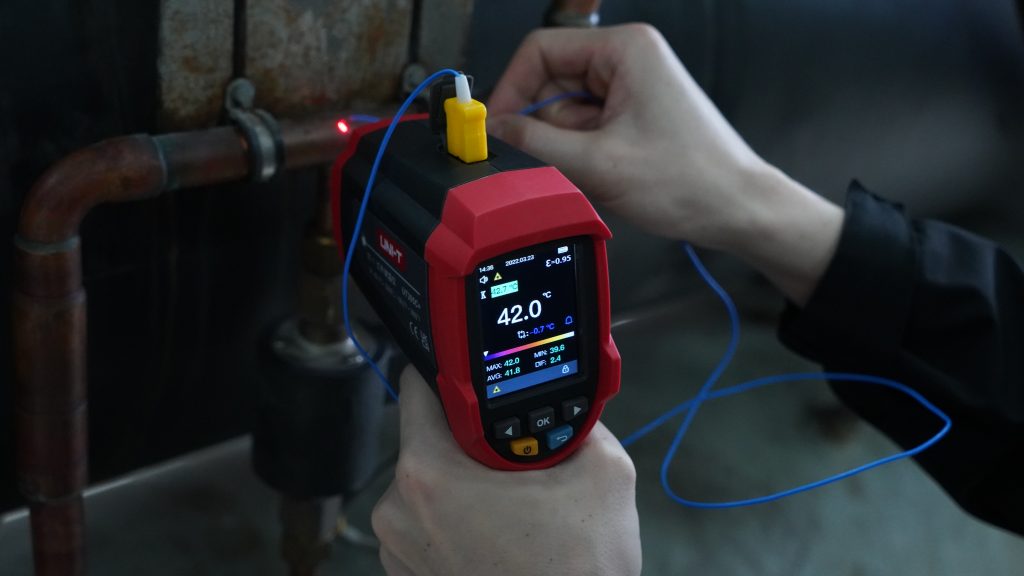Introduction the basic guide of thermocouples, you will learn:
- What is thermocouple and how does it work?
- Applications of thermocouples
- Types of thermocouples
- Structures of thermocouples
- How to select a thermocouple?
Chapter One: What is thermocouple and how does it work?
A thermocouple is a commonly used thermometer component that measures the temperature. It can take direct temperature measurement, convert the temperature into a thermoelectric motive force signal, and switch the signal to the temperature value of the measured target via the thermometer. A thermocouple is a simple, robust and cost-effective temperature sensor used in a wide range of temperature measurement processes. It is an ideal tool for the industrial field. Its basic principle is the thermoelectric effect.
When two wires composed of dissimilar metals are joined at both ends and one of the ends is heated, there is an electromotive force which flows in the thermoelectric circuit, that is, the Seebeck effect. The end that measures the temperature is the working end or the hot junction, and the end connected to the circuit via the lead is the cold junction. The temperature of the thermocouple’s cold junction should remain unchanged when measuring, and the thermoelectric potential is proportional to the measured temperature. If the temperature of the cold junction (usually the environment) changes during measurement, the accuracy will be seriously affected. Some measures can be taken to compensate for the influence caused by temperature change, which is called cold junction compensation.
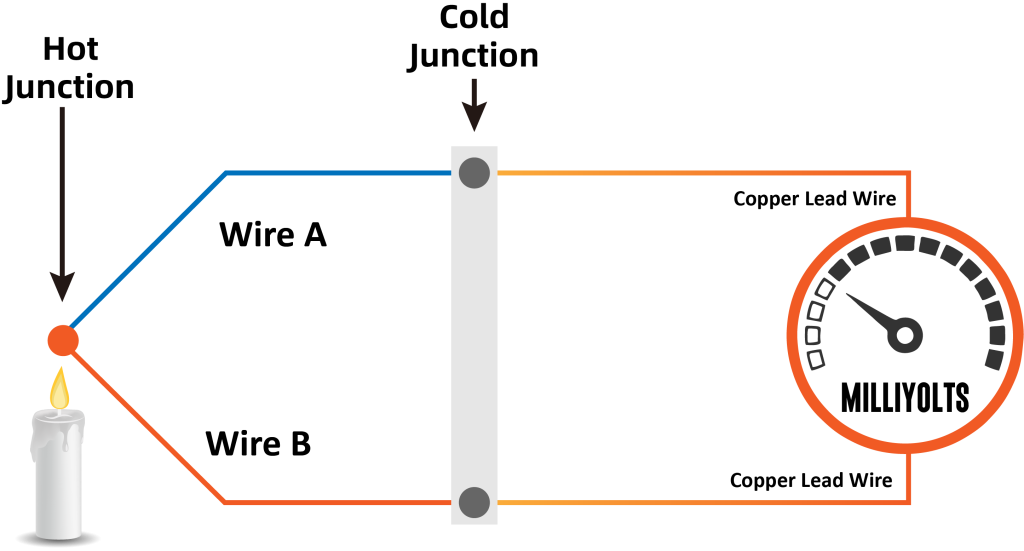
Chapter Two: Applications of thermocouples
A thermocouple is the most widely used temperature sensor, because it is robust and cost-effective, and has a wide temperature range. It is mainly applied to measure, monitor and control the temperature of industrial production, thermal power generation, air conditioner, refrigerator, electronic power and food processing.
Introducing Uni-T’s Thermocouple products
UT325F: 4-Channel Thermometer is a high- accuracy digital thermometer that uses a thermocouple as the temperature probe and comes with a microprocessor. It can work with type K, J, T, E, R, S and N thermocouples. With four-channel temperature measurement, the temperature difference can be displayed.Each channel supports individual thermocouple type switching.
UT320A/D: It is a dual input thermometer,which has wide measurement range,high measurement accuracy and selectable thermocouple K/J.
UT325: Dual input(T1,T2), suitable for K-, J-, T-, E-, R-, S- and N- type thermocouples.Equipped with over limit alarm, over limit signal output and user self-debug features.
UT305A+/C+:It support K-type thermocouple. In the comparison mode, the thermometer automatically calculates a difference (IR-KT) by subtracting the temperature of the object being measured (IR) from the type K thermocouple temperature(KT). It is suitable for surface temperature comparison, emissivity adjustment, etc.
UT305A+/C+: It support K-type thermocouple. In the comparison mode, the thermometer automatically calculates a difference (IR-KT) by subtracting the temperature of the object being measured (IR) from the type K thermocouple temperature(KT). It is suitable for surface temperature comparison, emissivity adjustment, etc.
Chapter Three: Types of thermocouples
Thermocouples can be divided into two types: Base metal thermocouples and noble metal thermocouples. Base metals, such as copper, iron or nickel alloys, cost less. The exact proportion of metal in the alloy is uncertain, but the voltage/temperature response curve is certain. Noble metal thermocouples are made of noble metals such as platinum and rhodium. The exact purity and proportion of the noble metal and its voltage/temperature curve are certain.
The following table shows some common thermocouple types and their range of use:
| Positive electrode materials | Negative electrode materials | Maximum range of effective temperature | Advantages | Disadvantages |
| Fe | Constantan | –346~2193°F –210~1200°C | Good linearity, Large thermoelectric power, High sensitivity, High stability and uniformity | Poor antioxidant in high temperature |
| Ni-Cr | Ni-Al | –454~2501°F –270~1372°C | Low price, Good linearity, Excellent antioxidant, High sensitivity, Widely used | Not suitable for reductive gaseous environment |
| Copper | Constantan | –454~752°F –270~400°C | Good linearity, Large thermoelectric power, High sensitivity, Temperature fluctuates linearly and has a good reproducibility, Fast heat transferring speed, High stability and uniformity, Low price | Poor antioxidant in high temperature |
| Ni-Cr | Constantan | –454~752°F –270~1000°C | Large thermoelectric power, High sensitivity | Not suitable for reductive gaseous environment. Poor uniformity of thermoelectric power |
| Ni-Cr-Si | Ni-Si | –450~2372°F –270~1300°C | Good linearity, Large thermoelectric power, High sensitivity, High stability and uniformity, Excellent antioxidant | Not suitable for reductive gaseous environment |
| Pt-13% Rh | Platinum | –58~3214°F –50~1768°C | Hight accuracy, High stability, Wide range of temperature measurment, Long service life, Excellent antioxidant in high temperature | Small thermoelectric power, Low sensitivity, Mechanical strength is decreased in high temperature, Sensitive to pollution |
| Pt-10% Rh | Platinum | –58~3214°F –50~1768°C | Hight accuracy, High stability, Wide range of temperature measurment, Long service life, Excellent antioxidant in high temperature | Expensive |
| Pt-30% Rh | Pt-6% Rh | 32~3308°F 0~1820°C | Hight accuracy, High stability, Wide range of temperature measurment, Long service life, High upper limit of temperature measurement | Expensive |
Chapter Four: Structures of thermocouples
There are two common thermocouple structures: Assembly thermocouples and sheathed thermocouples.
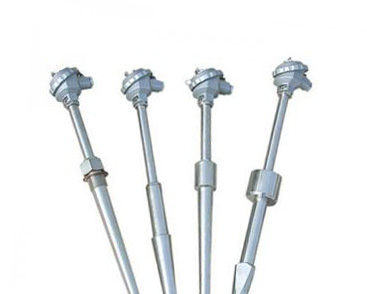
Assembly thermocouples:
An assembly thermocouple is mainly composed of junction box, protective tube, insulating sleeve, wiring terminal and thermal electrode, and is equipped with various mounting and fixing devices. It has the advantages of simple assembly, easy replacement, pressure spring temperature sensing component, good vibration resistance, wide temperature measurement range, high mechanical strength and good pressure resistance.
Sheathed thermocouples:
A sheathed thermocouple is formed by combining and stretching the thermocouple wire, insulation material (generally high purity magnesium oxide powder) and metal tube. It has the advantages of bending capacity, high pressure resistance, fast thermal response time and durable.
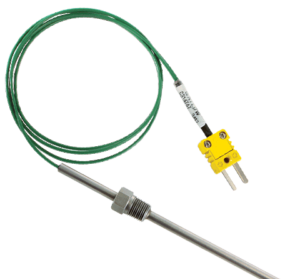
Sheathed thermocouple probes are available with one of three common junction types:
- Grounded junction thermocouples: At the tip of a grounded junction probe, the thermocouple wires are physically attached to the inside of the probe wall. This results in good heat transfer from the outside, through the probe wall to the thermocouple junction. It means that a grounded junction thermocouple will have a faster response time than an ungrounded junction thermocouple. However, grounded junction thermocouples are highly susceptible to noise caused by ground loops, resulting in low reading accuracy.
- Ungrounded junction thermocouples: In an ungrounded probe, the thermocouple junction is detached from the probe wall. The response time is slower than the grounded style. On the other hand, the junction is electrically isolated from the sheath to prevent electrical noise from interfering with the signal. It makes the temperature measurement accuracy higher, especially for very low level signals.
- Exposed junction thermocouples: An exposed junction thermocouple protrudes from the tip of the sheath and is exposed to the surrounding environment. It has the optimal response time, but is limited to noncorrosive and nonpressurized applications.

The thermocouple structure is simple and can be designed according to the actual application scenario. The following are the parameters of some of Uni-Trend’s thermocouple accessories, which can be used with the meters.
| Model | Range | Scope of application | Accuracy |
| UT-T01 | -40~260°C (-40~500°F) | Regular solid | ±2°C (-40~260°C) ±3.6°F (-40~500°F) |
| UT-T03 | -50~600°C (-58~1112°F) | Liquid, gel | ±2°C (-50~333°C) ±3.6°F (-58~631°F) ±0.0075*rdg (333~600°C) ±0.0075*rdg (631~1112°F) |
| UT-T04 | -50~600°C (-58~1112°F) | Liquid, gel (food industry) | ±2°C (-50~333°C) ±3.6°F (-58~631°F) ±0.0075*rdg (333~600°C) ±0.0075*rdg (631~1112°F) |
| UT-T05 | -50~900°C (-58~1652°F) | Air, gas | ±2°C (-50~333°C) ±3.6°F (-58~631°F) ±0.0075*rdg (333~900°C) ±0.0075*rdg (631~1652°F) |
| UT-T06 | -50~500°C (-58~932°F) | Solid surface | ±2°C (-50~333°C) ±3.6°F (-58~631°F) ±0.0075*rdg (333~500°C) ±0.0075*rdg (631~932°F) |
| UT-T07 | -50~500°C (-58~932°F) | Solid surface | ±2°C (-50~333°C) ±3.6°F (-58~631°F) ±0.0075*rdg (333~500°C) ±0.0075*rdg (631~932°F) |
Chapter Five: How to select a thermocouple?
1. Determine the application scenario
Thermocouples can be used across industries and applications, so selecting the right one starts with knowing exactly how and where you want to use it
2. Determine the temperature range
The temperature range of the selected thermocouple should preferably cover the desired temperature range. This requires us to know the temperature range of different types of thermocouples.
A type K thermocouple offers a wide temperature range and is one of the most often used thermocouples. However, if your thermocouple probe will be exposed to extreme temperatures, a type N thermocouple is more stable in high temperatures and a type T thermocouple is best for extremely low temperatures.
3. Determine the fast response time and durability
There are three types of thermocouple junctions: exposed, grounded or ungrounded. An exposed junction will provide the fastest response time. However, if the probe will be exposed to corrosive gas or high pressure, an exposed junction should not be used. An ungrounded thermocouple offers the slowest response time but can still be the best choice if it is also desirable to have the thermocouple electronically isolated from and shielded by the sheath. Generally, thermocouples with large wire diameters have very good durability but poor thermal response.
4. Consider the operating environment
An exposed thermocouple is limited in use to noncorrosive applications. Both a grounded or ungrounded thermocouple can be used in corrosive or high-pressure environments, but an ungrounded probe is best if there is a need to have the thermocouple electronically isolated from and shielded by the sheath.
5. Consider the installation requirements
The thermocouple may need to be compatible with existing equipment.
6. Consider the price
Noble metal thermocouples are generally more expensive than base metal thermocouples. Users can select the appropriate thermocouple according to the actual situation to ensure the normal measurement.
 Meters
Meters Global
Global